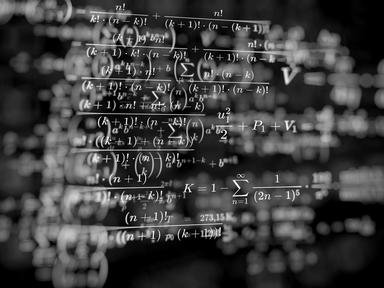Quiz Answer Key and Fun Facts
1. How many diameters can a circle of radius 10 cm have?
2. Which of these increases is the greatest expressed as a percentage?
3. A cube measures y cm on a side. If the surface area of the cube is 294 square centimetres, what is y (correct to 2 decimal places)?
4. The length of a side of a square is equal to a length of a side of a heptagon. If the perimeter of the heptagon is 84 cm, what is the area of the square?
5. The length of a rectangle is (x + y) cm and the breadth is (x - y) cm. If y = 2t + 28, where t is the negative square root of 36, find the area of the rectangle.
6. A stick (1.12 * 10^0) metres long is divided into 3 parts between Anne, Carol and Ben in the ratio 1:3:4. Find the length of the part of the stick Ben receives.
7. Given that 2^x = 7, and 2^y = 38, find 2^(x + y).
8. A factory produces 10,000 litres of milk in a day. Determine the number of millilitres of milk produced by the factory in February 2000.
9. What is the arithmetic mean of - 8, (2 - [- 8]), 3, 7 and - 1?
10. Which of these points lies on the line y = 2.5x + 112?
Source: Author
me07
This quiz was reviewed by FunTrivia editor
crisw before going online.
Any errors found in FunTrivia content are routinely corrected through our feedback system.
